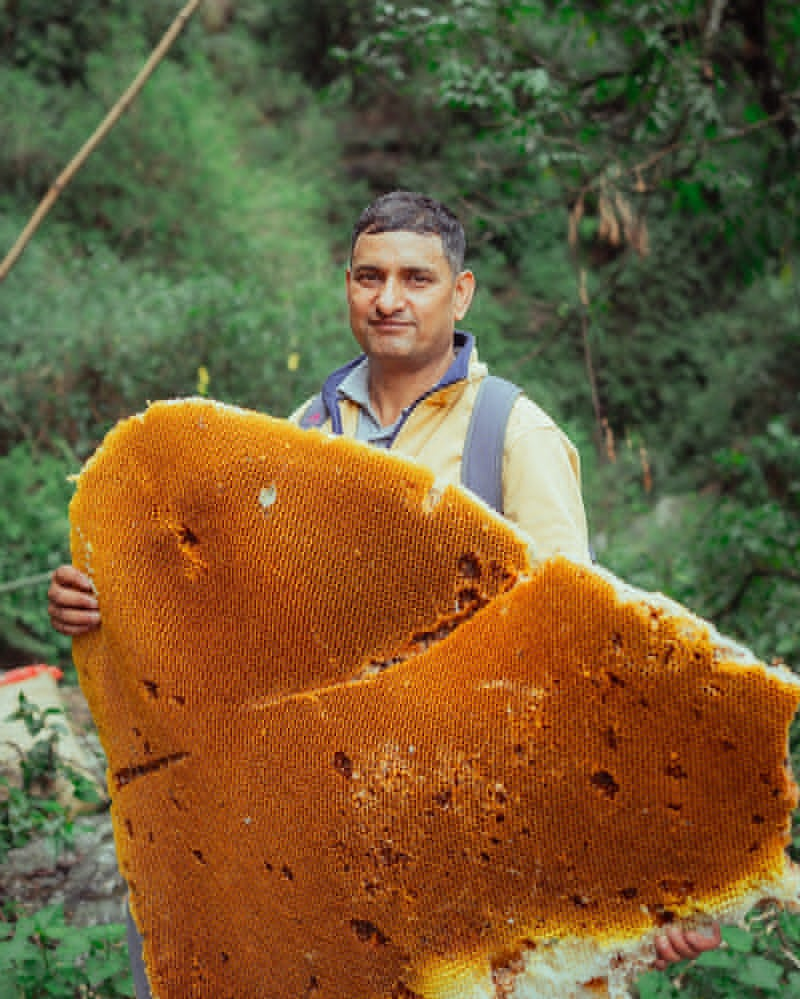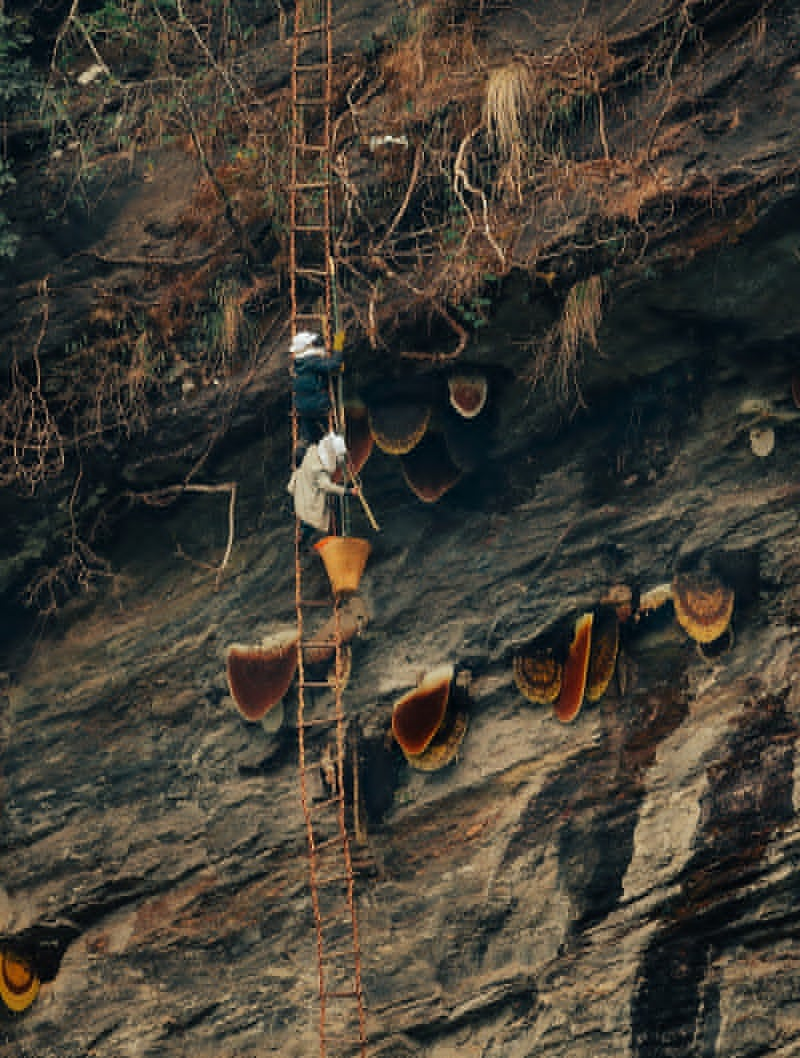Global appetite for Nepal's cliff honey skyrockets

In Nepal's rugged hilly regions, a unique honey known locally as "Cliff Money" or "Wild Honey" is witnessing a dramatic rise in global demand. Internationally recognized as "Mad Honey" or "Medicinal Mad Honey," this honey has garnered attention for its distinctive taste, health benefits, and the risky, adventurous process of its collection. While its demand grows worldwide, the journey from hive to jar remains fraught with challenges, raising concerns about the honey’s long-term sustainability.
What is Mad Honey?
Mad Honey, produced by the world’s largest honeybee, Apis laboriosa, is a rare and potent honey found in Nepal's hilly areas. These bees gather nectar from rhododendron flowers, which contain grayanotoxin, giving the honey its unique characteristics. While small quantities of this honey can invigorate the body, larger amounts can cause intoxication—a phenomenon that has led to its colloquial name "Mad Honey."

Consumed in moderation, Mad Honey is believed to enhance blood circulation, boost vitality, and strengthen immunity, making it a sought-after natural remedy.
Why the Growing Demand?
The honey's distinctive taste, health benefits, and medicinal properties have catapulted it into international popularity. Its rarity and the perilous methods required to extract it further boost its allure. Consequently, demand has surged in recent years, creating a booming market. This honey's global use as a health supplement has also driven an increase in exports.
Where Is This Honey Found?
Mad Honey is harvested in several districts across Nepal, including Lamjung, Myagdi, Baglung, Jumla, Jajarkot, Syangja, Gorkha, Dolakha, Dhading, and Sindhupalchok. The honey gathered from these regions is marketed locally, nationally, and internationally.
When is This Honey Collected?

The timing of harvesting this honey varies by region and altitude, but it typically occurs twice a year. The first harvest is conducted from Chaitra to Jestha of Nepali month (March to May), and the second from Ashoj to Mangsir (September to December)
Honey collected in May can sometimes be toxic, potentially causing illness. Conversely, honey gathered in December is considered nutritious and beneficial.
How is it Collected?
The collection of this honey, also called “honey hunting”, is fraught with risk. Honey hunters use nettle fiber ropes and wooden platforms to access beehives on steep, hard-to-reach cliffs. The process involves sending smoke to drive the bees away, allowing the hunters to extract the honey safely. This traditional practice, enriched in both artistry and science, has been handed down through generations and it remains a key aspect of the honey's allure.
Benefits to Local Communities
The cliff honey significantly impacts local economies. Processed and packaged for various markets, it provides substantial income for villagers and creates job opportunities. The honey industry contributes millions of rupees annually to the country's economy.
The company "Himalayan Bee Concern," based in Lamjung, plays a crucial role in this industry. According to Sunil Kandel, the company's managing director, “Our collaboration with local authorities, forest offices, and honey hunters is essential to managing and marketing the honey. We provide necessary protective gear and training to ensure the safety and efficiency of honey hunting.”
Kandel adds, “Our goal is not only to promote this unique product but also to support sustainable honey practices. The honey hunting process is deeply rooted in tradition, and our work aims to preserve this heritage while enhancing the livelihoods of local communities.”
Challenges and Opportunities

Despite its economic benefits, the honey industry faces challenges due to overharvesting, habitat loss, and climate change among others. Sustainable practices are essential to preserve this resource for future generations. Local community-led initiatives play a crucial role in ensuring long-term viability. As Nepal’s wild honey industry continues to thrive, balancing economic gains with environmental stewardship remains imperative.









Leave Comment